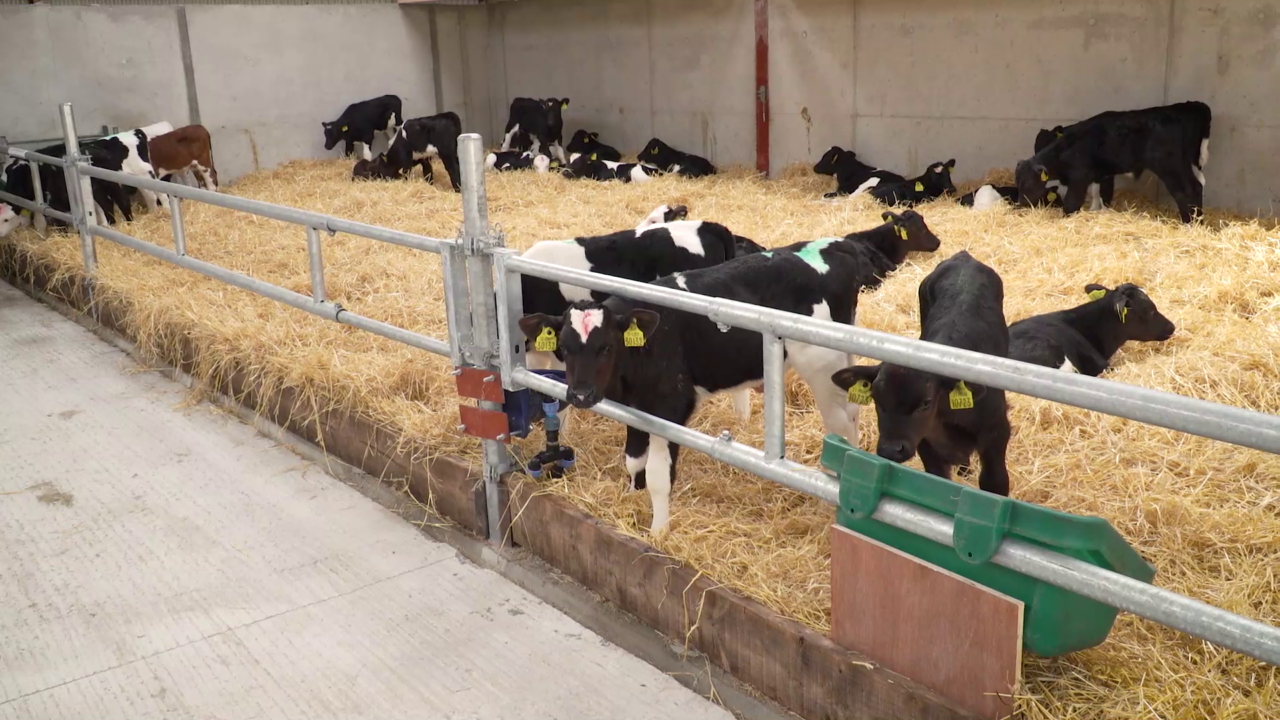Both colostrum and transition milk have important roles to play in ensuring that young calves get the best start in life.
The importance of the management is not lost on most farmers, with the majority putting a significant amount of effort into their care.
The environment the calf is born into, is reared in and the quality of the feed offered, will all have an impact on the health of the calf.
Ensuring that calves are born into as hygienic environment as possible is important, and calves should be born into a shed with a sufficient bed of straw.
Shortly after birth, they should have their naval sprayed with iodine and be fed colostrum.
Colostrum
Feeding colostrum to calves shortly after birth is vital for the health of the young calf. Not only is it a source of nutrients, it is also a source of maternal antibodies that protect the calf against infections, many of which occur early in life.
The colostrum being used to feed calves should be tested for its quality, and this can be done quite simply on farms using a brix refractometer.
Only colostrum with a reading over 22% should be fed to calves, as this means the colostrum contains 50 mg/ml of immunoglobulins.
Calves should be fed high-quality colostrum using the ‘1,2,3’ method.
Using the ‘1,2,3’ method:
- Use the first milk (colostrum) from the cow;
- Feed the calf colostrum within the first two-hours of birth;
- Calves must be offered at least 3L of good-quality colostrum.
The average dairy calf is around 35kg at birth, which is by feeding these calves 3L of high quality colostrum is important.
For a 35kg calf, 3L equates to around 8.5% of their weight at birth, and this then ensures that once the colostrum is of sufficient quality, they will receive enough antibodies.
If your average calf weight is higher than 35kg, you may need to feed more colostrum to calves for their first feed.
Transition milk
Transition milk also can have a important role to play in calf health during the early stages of life.
Transition milk is the milk collected from milking’s two to six, it is no longer colostrum and can’t yet enter the bulk tank.
Although, once a calf has reached 24 hours old, it can no longer acquire new antibodies, and the consuming of transition has a local effect in the lining of the gut which keeps the calf healthier and helps to prevent sickness.
Research conducted by Teagasc, determined that by feeding 5L of transition milk/day, there was less incidents of ill health in calves.
The feeding of transition milk is especially important for farms that are vaccinating cows for scour.
The advice for transition milk, is that it should be fed to calves at a rate of 2-2.5L/feed, twice a day for around the first three days of life.
Johnes
Although colostrum and transition milk feeding to calves is important, it should only be done from cows that you are sure are free of Johnes.
For cows that are suspected of having Johnes disease, colostrum and milk should not be fed, and storage supplies should be used instead.
A herd screening for Johnes is advised if you are not already completing one within your herd.
